#The world Humpback Whale population
Text

...God Help Me.
#that's 20% of the population of Wyoming#the size of the city I grew up in#the same number of humans as ants in the average lawn ant colony#The world Humpback Whale population#25% more people than attended the largest Tswift concert ever#I love you all but I am very confused
1K notes
·
View notes
Text

Common Sea Monkey/Mermaid
Kingdom: Animalia
Phylum: Chordata
Class: Mammalia
Order: Primates
Suborder: Haplorhini
Infraorder: Simiiformes
Clade: Hydropithecoidea
Family: Hydropithecidae
Genus: Hydropithecus
Speices: H. ichthyophilus (“fish-loving water ape")
Ancestral species: possibly Eosimias sinensis
Temporal range: Pliocene to recent (3.0 mya - present)
Information:
Though seal-like in appearance, H. ichthyophilus, better known by the natives as *sunsaapali* and to the English-speaking world as the mermaid or common sea monkey, is, as its name suggests, not a pinniped, but rather, an aquatic primate. A member of a broader clade known as the hypdropithecoids or sea monkeys, the ancestors of this clade were likely basal simians (though its exact placement in the primate family tree cannot be determined by morphology alone since it shows a mosaic of features found in both the New World and Old World clades of monkeys, as well as features which point to a stem-simian origin) which made the transition from land to sea sometime in the late Miocene (though the common sea monkey itself is a relatively young species, with the oldest fossil material dated to around 3 million years ago in the late Pliocene). Around 10 feet in length and around 800 lbs in weight, this creature is among the larger members of its clade. Sexual dimorphism is minimal, with males being only slightly larger than females and sporting larger canines. It is also the most widely-distributed member of its clade, being found in open ocean habitats all across Archaeonesia with a total wild population of around 90,000 mature individuals, whereas most of its relatives are confined to the deep coastal waters east of the Isle of Perils. Primarily a pelagic predator, this creature’s diet is incredibly varied, going after small marine reptiles (including venomous sea snakes), a wide assortment of open ocean fish, cephalopods (including ammonites), flying sea birds, pterosaurs, and even flightless birds like penguins and some varieties of auks. This species is known to dive to the twilight zone, as far as 2,000 feet deep, in the search for food, where it hunts large deep-sea arthropods. Most of the water it needs to survive is obtained through its food. Coloration in this species is highly varied. The most common color variant is the “skipjack” one, named after its similarity to the color patterns of the skipjack tuna with its blue and white countershading. However, other color morphs exist, including a melanistic, leucistic, dark brown, light/sandy brown, “humpback” (gray and white like the whale it’s named after), mottled grey and white, and a piebald one.
A highly social and intelligent aquatic primate, the common sea monkey has a highly complex matriarchal social structure, living in family groups of up to 30 individuals. Pack-hunting is a common phenomenon and typically occurs when hunting larger prey, the younger and more limber juveniles corralling prey towards the larger and more powerful adults. Orphaned young are often cared for by other female members of the group, and young are frequently passed around from adult to adult when the respective parents of the young sea monkeys are off foraging. Though a formidable predator in its own right, it is still subject to predation from other ocean-going predators, namely whales, sharks, and large marine reptiles. To counter this, the common sea monkey uses a variety of “songs” to indicate both the identity of the predator as well as how close it is to the group. A highly vocal animal, this species communicates with a wide variety of sounds other than just “singing”. Clicking is a common vocalization, seemingly a form of echolocation as is seen in dolphins. Barking and gurgling are both used to convey aggression. This creature’s eyesight is superb, allowing it to see in pitch black seas. Like dolphins, it sleeps with one eye open and can hold its breath for hours at a time. A swift swimmer, it relies on its speed and maneuverability to escape predators, though it will attack if seemingly cornered, biting its attacker viciously. Another common way to evade predators is to spontaneously void its bowels, clouding the way with a noxious cloud of feces which both disorients its attacker and overwhelms its sense of smell. Breaching is a frequent behavior and appears to be done to swiftly grab seabirds or pterosaurs out of the air. Curious animals, they will readily approach divers and may also jump onto boats to escape predators. Some may even offer divers fish or crustaceans seemingly as a peace offering, a common gesture between sea monkey family groups.
This species mates year-round, although it occurs most frequently during November and December. The large tusks of the male are a secondary sex characteristic and are typically merely for show rather than function. The larger the tusks, the more attractive he is to females. Unusually for mammals, this species exhibits polyandry, with females having multiple mates. Gestation takes around 6 months, and the babies are born without claws or teeth to avoid injuring the mother during birth, being born feet first as well to prevent the risk of drowning during birth. Full size is reached by 2.5-3 years old and sexual maturity by 4. Young males are kicked out of the group by this period, which leads them to seek out other family groups to join, while the females typically stay with their original family group. In the wild, they can live as long as 26-30 years and in captivity, they can easily live to 34-40 years.
Though it primarily dwells in open oceans, these creatures are known to occasionally enter coastal waters and come ashore, particularly during tropical storms, which has led to a belief in many regions that these animals bring storms. Despite this association, these animals are seen rather positively by the natives. In other regions, these creatures are believed to be the reincarnated souls of sailors who died at sea. On the eastern coast, their tendency to swim alongside the outrigger canoes of the Banguani people, a culturally Polynesian minority in the region, up and down the coastline in search of food has led to a more humorous name amongst some as “Banguani sea dogs”, the idea based on the belief that the Banguani had a special association with these animals. Indeed, there is some truth to this. The Banguani people consider the common sea monkey to be the spirits of their ancestors and sometimes pay tribute to the animals by offering them some of their catches. In some areas, this species was also a historic food source, being heavily hunted in antiquity, with cave paintings all throughout the region directly depicting this. In the modern day, few people eat these animals, namely due to the fact that since they’re now known to be distantly related to humans, there is a fear of pathogens spreading from common sea monkeys to our own species, but many still hunt them for their teeth and tusks or to take their young, which are highly sought-after by aquariums and wildlife institutions abroad for their unique biology. Nicknamed the “mermaid” for its passing resemblance to the mythical creature, fringe theories suggest that a population of these creatures which escaped Archaeonesia when the border mountains crumbled back into the sea might be responsible for myths of mermaids and selkies. Interestingly, along the southern seas of the Isle of Perils, this creature is very rare, possibly due to the presence of seals and sea lions, which suggests that there may be an element of competitive exclusion between the two groups. It is sympatric with most other species in its clade, though there appears to be little interspecies competition between them, suggesting some level of niche partitioning. Remains of common sea monkeys have occasionally been found in the stomachs of giant deep-sea cephalopods, suggesting that some deep-sea creatures may prey on them. When dying, these animals are known to isolate themselves, seemingly swimming to shallow waters or nearby shorelines to die, a behavior suggested to have an evolutionary basis: by isolating themselves, the smell of their dead body will not attract predators to the larger group and therefore risk additional casualties.
#original species#novella#speculative evolution#fantasy#scifi#scififantasy#speculative biology#speculative fiction#speculative zoology#worldbuilding#creature art#sci fi#fantasy worldbuilding#fantasy creature#scifi worldbuilding#scifi creature#aquatic ape theory#sea monkey#mermaid
5 notes
·
View notes
Text
Okie dokie, after having to do meditative breathing after reading an instagram comments section, let’s talk whales!! What is a whale? What is a dolphin? Is a square a rectangle? Am I too pedantic? (yes) Is this important? (definitely not)

So, the group ‘Cetacea’ is named for the Latin word, ‘cetus,’ derived from the Greek word ‘ketos.’ Cetus refers to large sea animals, including whales, as well as the constellation named Cetus, depicting a whale. The group Cetacea, as you can probably derive, are “whales.”
Let’s discuss the parvorders. Mysticetes are our baleen whales (see: humpbacks, blues, greys, fins, etc.), and Odontocetes are our toothed whales (see: orcas, sperm whales, bottlenose dolphins, harbor porpoises). Now, after this last set of parentheses, you might see where the source of the confusion from the questions I asked above is.
For many years, the general populous has been laboring under the misinformation that dolphins are not whales. But never fear, I am here to free them from the shackles of 2010’s Discovery Channel oversimplification. Ok but in all seriousness, let’s talk dolphins. ‘Dolphin’ often refers to species in the family ‘Delphinidae,’ but also to three more families comprising two families of river dolphins and one family of brackish dolphin. Dolphins is a distinctive term within Cetacea to describe several families. Although interestingly, ‘porpoises’ just refers to a single family within Odontocetes. I just learned that!
So, what is a ‘whale?’ If I surveyed people on the street, I think the general answer is that it has to be a huge cetacean. But when the maximum measured length (6.45 m/21.2 ft) of the smallest baleen whale (pygmy right whale) is 3.4 m/11 feet shorter than the maximum measured length (9.8 m/32 ft) of the largest dolphin (orca), that’s maybe not the best definition. Some might refer to baleen, but then how does the sperm whale, who has teeth and is an odontocete, fit?
The answer is, all cetaceans are whales! From vaquita to blue whale, it’s whales all the way down. Colloquially, this is not the definition that most use, but as a formal, scientific definition, this is 100% correct. So, if you are like me, and you see someone posted a beautiful drone video of orcas on instagram to celebrate World Whale Day for the comments to be full of people saying ‘these are dolphins, not whales,’ and not being like ‘holy shit thank you for sharing this beautiful video with us,’ now you too can be burdened by the knowledge that no, all Odontocetes are whales no matter how small! Good luck on fighting the endless fight in comments sections my pupils.
(My sources are the wikipedia articles for cetacea, cetus, toothed whale, baleen whale, dolphin, porpoise, orca, pygmy right whale, and whale. Wikipedia iffy yes yes, but rest assured I knew this info before Wikipedia from a Prophetic Dream/course on marine mammals during my bachelor’s/experience working in fisheries observing after my bachelor’s)
#marine biology#biology#whales#whale#dolphin#whale weekly#annoying biology rants#marine biologist#annoying marine biology rants#im tired#so I write weird#i’m sorry#porpoise#whales deserve kisses on their noggins
5 notes
·
View notes
Text
The Cachalot's Cold War
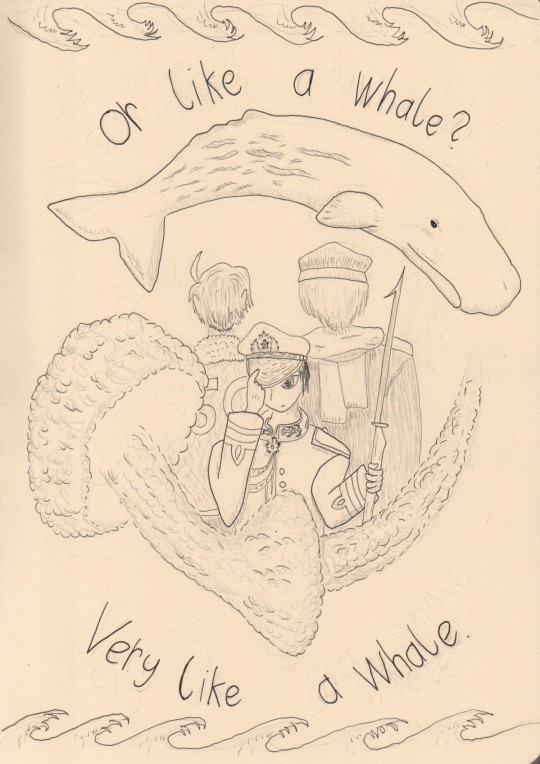
"The tenth meeting of the International Whaling Commission at The Hague in 1958 implemented new restrictions, extending the existing prohibition on killing humpbacks in the North Atlantic and in part of the Arctic, and limiting their hunting in the Antarctic. Such limits meant nothing to those who had not signed up to the organization. 'The whaling industry lives with a recurring nightmare: the extinction of the whale,' The Times stated in a forthright editorial in January 1959, foreseeing 'a massacre in the Antarctic next season'. It demanded neutral observers and a ban on the building of new whale-ships without consultation. 'Britain's role as peacemaker is a laudable one. It can, however, hardly be pursued to the detriment of British whaling, and cannot be pursued without the cooperation of others.' As another scientist pointed out, 'conservation had failed mainly because whales belonged to no one and it was no one's direct interest to look after them.
"While the IWC investigated more humane ways of killing whales, Holland and Norway -- two of the so-called 'big five' of the whaling nations (the others being Britain, Japan and Russia) announced their decision to withdraw from the convention 'because it has proved impossible for the two countries to obtain reasonable whaling quotas'. Even as the western nations squabbled, Japan was increasing its fleet. By 1963, headlines were announcing, 'TASTE FOR WHALE MEAT BOOSTS INDUSTRY' a reference to the fact that for the Japanese, whale oil was secondary to its meat — and noting that the nation had recently acquired the Southern Harvester, the same ship visited by the Queen's husband. There was a certain bias to such reports 'There is a mechanical ruthlessness about Japanese whaling methods which makes the whalers of a few years ago look like amateur adventurers' — which was another legacy of war. The same article added that a 'state of piracy' was 'gradually emptying the whaling grounds'. Whaling was a free-for-all, and one of the worst offenders was the Greek shipping magnate, Aristotle Onassis, future husband of the former First Lady. His vessels were purposely registered in Honduras and Panama, countries beyond the IWC's membership, and plundered protected waters, taking whatever whales they met, 'be they endangered species or newborns'. Only when Norway publicized his actions— and after the Peruvian navy and air force had opened fire on his ships for hunting whales within their territorial waters — was Onassis forced to stop his slaughter, finding it more financially liable to sell his fleet to the Japanese. All this was accomplished despite — or perhaps because of — quotas imposed by the International Whaling Commission. The Antarctic catch for 1967—8, for example, was set at thirty-two thousand 'Blue Whale Units'. The world's largest animal was reduced to a mathematical quantity, and its ancient population as 'stocks' in bureaucratic equations. It was a terrible arithmetic:
1 BLUE WHALE UNIT = 2 FINBACKS, OR 2½ HUMPBACKS, 6 SEI WHALES.
"Not only was the average size of whales in the catch declining, 'which points suspiciously to overkilling', as one scientist noted, but 'the CDW — take per catcher's day's work — which is a measure of the effort required to take a whale, is also steadily declining, which tells us what we already know, that the whales are disappearing'. An awful possibility led another marine biologist to wonder, 'What will be next? Will the orbiting satellite speak through space to tell the hunter where to find the last whale?'
"The whales could not win. As the rorquals diminished in the Antarctic, the whaling nations turned back to sperm whales. Many thousands were caught by the fleets on their way to the Southern Ocean, in warmer waters where females and breeding stocks were found. During its London meeting in 1965, the IWC discovered 'massive evidence' to show that regulations about the size of sperm whales that could be taken were being comprehensively broken. As a result, the commission banned sperm whaling between latitudes of 40° north and south. That year the killing reached its historical crescendo, with the death of 72,471 whales.
"One of the last whaling ports was Dundee, sending ships to waters that, twenty years later, would witness Britain's last colonial war, and where they now lie as rusting wrecks in the rocky harbours of South Georgia and the Falklands. Some of the men who worked on the ships are still alive, and describe their work in these open-air abattoirs as an inferno. The remembered noise, the smell, the sights repulse their memories, retrospectively. If the whales had been able to scream, they say, no one would have been able to bear their work. Instead, the whales were rendered dumb in the face of destruction, as if they agreed not to protest against their abuse, the more to shame their persecutors.
"I cannot claim immunity. As I walked home from school through wet autumn leaves to find my mother drying clothes by the fire, Southampton factories were processing whale-oil margarine which sat in yellowy blocks in our fridge, while my cheeks were brushed with whale fat, for 'women will be interested to learn it goes into the making of their cosmetics', as my encyclopædia informed me.
"The lingering smell of whale.
"While I read illicit American comics under my bedclothes, fantasizing about a world of sleek-suited superheroes, new processes - sulphurization, saponification, distillation - extended and rationalized the use of whales in lubricants, paint, varnish, ink, detergent, leather and food: hydrogenation made whale oil palatable, sanitizing its taste. Efficiency ruled, in place of the early whalers' waste. Whale liver yielded vitamin A, and whale glands were used to make insulin for diabetics and corticotrophin to treat arthritis. Nineteenth-century trains had run on whale oil; now streamlined cars with sleek chrome fins used brake fluid made from the same stuff. Victorian New Englanders had relished doughnuts fried in whale oil; now children with crew-cuts and stripy T-shirts licked ice cream made from it. Their bright shiny faces were washed with whale soap, and having tied their shoelaces of whale skin, they marched off to school, past gardens nurtured on whale fertilizer, to draw with whale crayons while Mum sewed their clothes on a machine lubricated with whale oil, and fed the family cat on whale meat. In her office, big sister transcribed memos on typewriter ribbon charged with whale ink, pausing to apply her whale lipstick. Later that afternoon, she would play a game of tennis with a whale-strung racquet. Back home, Daddy lined up the family to take their photograph on film glazed with whale gelatine.
"Whales imprinted with the image of the age.
"It was not until 1973, when I was a teenager, that Britain began to ban whale products. Even then, it allowed exceptions such as sperm whale oil, used as engine lubricant, and spermaceti wax, for softening leather — of which it still imported a total of two thousand tons a month — along with other products 'incorporated abroad into manufactured goods. Sperm whales had not been overexploited,' said the Minister of State for Agriculture, Fisheries and Food, 'but baleen whales had.' The Pet Food Manufacturers' Association - which used ninety-five per cent of all imported whale meat to give its dog and cat foods "'chunky" appeal', announced that it would accept its last consignment that November.
"Whales may no longer have lit the world, but time still ran on their oil. Watchmakers used the superior lubricant, prized in polar latitudes for its ability to allow chronometers to function in freezing temperatures (thereby allowing the hunting of more whales by Antarctic fleets). As the giant astronomical clock of Strasbourg Cathedral ceremonially tolled European hours, it did so lubricated by the products of William Nye's Oil Works, New Bedford.
"And while whale-oiled clocks ticked, the mythic beast acquired a new meaning in the half-life of the nuclear era. In the late 1940s the American artist Gilbert Wilson became obsessed with Melville's novel, as well as with modern science. In the Bulletin of the Atomic Scientist, he wrote of Moby-Dick that 'no tragedy in world literature succeeds quite as powerfully or as clearly in pointing up the mortal errors of hate and domination'. Wilson even suggested to Shostakovich that they should create an opera of Moby-Dick as 'a catalyst for helping to dissolve American and Soviet cold war dissension and to restore world peace'.
"In Wilson's own dystopian imagination, the White Whale became an augury of atomic conflict, and Ahab's 'insane pursuit of Moby Dick into the Sea of Japan' analogous to America's atrocious nuclear experiments and explosions in the same area. Similarly, in his critical work, The Trying-Out of Moby-Dick, published in 1949, Howard P. Vincent considered that Moby Dick was 'ubiquitous in time and place. Yesterday he sank the Pequod; within the past two years he has breached five times; from a New Mexico desert, over Hiroshima and Nagasaki, and most recently, at Bikini atoll.'
"A cloud like a whale."
- Philip Hoare, Leviathan, or, The Whale. Chapter XII - A Cold War for the Whale.
#cw animal death#cw whaling#cw nuclear war#hws japan#hws america#hws russia#aph japan#aph america#aph russia#Honda Kiku#Alfred F. Jones#Ivan Braginsky#hws Cold War#cetaceans#odontocetes#toothed whales#sperm whales#historical hetalia#hetalia#hetalia fanart#Philip Hoare#Leviathan
10 notes
·
View notes
Text
The Majestic World of Whales: Guardians of the Ocean
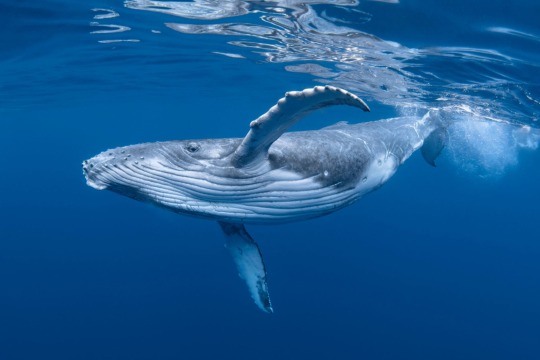
Introduction: Whales, the colossal marine mammals that gracefully navigate the depths of our oceans, captivate the human imagination with their sheer size and mysterious allure. These magnificent creatures, belonging to the cetacean order, have fascinated scientists, environmentalists, and nature enthusiasts alike. In this article, we will delve into the world of whales, exploring their diverse species, unique characteristics, and the crucial role they play in maintaining the balance of the oceanic ecosystem.
Whale Diversity: Whales come in various shapes and sizes, showcasing the vast diversity within the cetacean order. There are two primary categories of whales: toothed whales (odontocetes) and baleen whales (mysticetes). Toothed whales, such as the iconic sperm whale, use their teeth for hunting and consuming prey, while baleen whales, exemplified by the massive blue whale, filter feed using comb-like plates to strain small organisms like krill from the water.
Toothed Whales:
Include species like the sperm whale, killer whale (orca), and dolphins.
Known for their echolocation abilities, helping them navigate and locate prey.
Baleen Whales:
Encompass species like the blue whale, humpback whale, and gray whale.
Filter feeders that consume large quantities of small marine organisms.
The Majesty of Whales: Whales are renowned for their impressive size, with some species ranking among the largest animals on Earth. The blue whale, for instance, holds the title for the largest animal ever to exist. This colossal creature can reach lengths of up to 100 feet and weigh as much as 200 tons. The sheer magnitude of these marine giants is a testament to the wonders of evolution and adaptation in the oceanic realm.
Keyword: Whale The term "whale" invokes images of grandeur and mystery, symbolizing the epitome of marine magnificence. The sheer mention of this keyword evokes a sense of awe and curiosity, prompting us to explore further into the depths of their existence.
Behavioral Patterns: Whales exhibit fascinating behavioral patterns, adding layers to their enigmatic charm. Migration is a common behavior observed among various whale species. This remarkable journey spans thousands of miles and often occurs for breeding or feeding purposes. Humpback whales, known for their intricate songs, are famous for their annual migration between feeding and breeding grounds.
Communication:
Whales communicate using a variety of vocalizations, including songs, clicks, and whistles.
Each whale pod has its distinct set of vocalizations, contributing to their social structure.
Social Structure:
Whales are highly social animals, often forming tight-knit family units known as pods.
The social bonds within these pods are crucial for activities such as hunting and protection.
Conservation Challenges: Despite their awe-inspiring presence, whales face numerous conservation challenges in the modern world. Human activities, such as shipping, pollution, and climate change, pose significant threats to their habitats and well-being. Collisions with ships, entanglement in fishing gear, and the disturbance caused by underwater noise pollution all contribute to the challenges these majestic creatures endure.
Impact of Climate Change:
Melting ice caps affect the availability of prey in certain regions, impacting the migratory patterns of some whale species.
Changes in ocean temperatures can disrupt the distribution of marine organisms that whales rely on for food.
Conservation Efforts:
International efforts, including marine protected areas and regulations on whaling, aim to mitigate the impact of human activities on whale populations.
Research initiatives focus on understanding whale behavior and migratory patterns to implement effective conservation measures.
Ecological Significance: Whales play a vital role in maintaining the ecological balance of the oceans. Their feeding habits contribute to controlling the population of certain marine organisms, preventing overpopulation that could disrupt the marine food web. Additionally, whale excrement, rich in nutrients, serves as a natural fertilizer for the ocean, enhancing the productivity of marine ecosystems.
Keystone Species:
Whales are considered keystone species, as their presence significantly influences the structure and function of marine ecosystems.
Their impact extends from regulating prey populations to influencing nutrient cycling in the ocean.
Tourism and Education:
Whale watching has become a popular ecotourism activity, providing economic incentives for the conservation of these magnificent creatures.
Educational programs and initiatives raise awareness about the importance of whales in marine ecosystems.
Conclusion: In conclusion, the world of whales is a tapestry woven with elements of mystery, grandeur, and ecological significance. From the colossal blue whale to the agile killer whale, these marine giants continue to capture our imaginations and remind us of the intricate balance that sustains life beneath the ocean's surface. As guardians of the ocean, the conservation of whales is not just an environmental imperative but a commitment to preserving the marvels of our planet for generations to come.
2 notes
·
View notes
Note
Can you tell us fun facts about the whale Megaptera is based on? I love learning new things when you post about creatures
oh god you mean humpback whale. brother that is going to be a very long post
i cant talk too much about the character herself because i prefer to keep it secret until the time is right but the whale she is, megaptera novaeangliae, or humpback whale, is one of my favorite rorquals
rorquals (balaenopteridae) are baleen whales that specialize in lunge feeding behaviors, which (like most animals) dictates almost all parts of their physiology which have been specialized to aid in foraging. rorquals sport long, streamlined bodies designed to lunge at clouds of prey, and a throat lined with grooves (striations, or ventral pleats) that inflate like an accordion to accommodate the huge mouthfuls of water and prey they consume. a defining feature of rorquals, and all baleen whales, is a lack of a mandibular symphysis, meaning the halves of their jaw bone are unfused and can actually spread apart to maximize the volume of their "gulps". this odd feature, basically unseen among mammals, is what caused coastal communities to mistake rotting whale corpses for giant boars or tusked creatures and gave rise to legends like sea pigs.
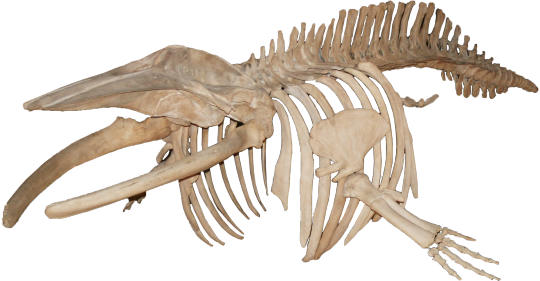

which is ironic considering that cetacea (all whales) are actually artiodactyls (hoofed mammals) ... and their closest land relatives are hippos. also included in this family are deer, sheep, and pigs.
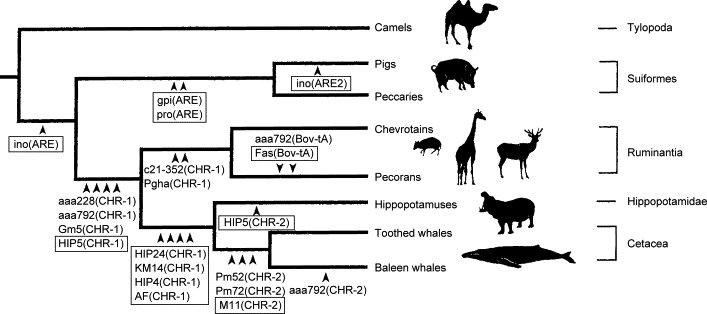
its really really interesting to me how arguably some of the most successful and fearful predators in the world today (orcas, or even just the fact the largest animal ever to exist which also eats millions of creatures in a single day) have the vestiges of meek ruminants complete with chambered stomachs and long small intestines designed to break down fibrous plant material.
but thats just rorquals in general... humpback whales in particular have many attributes that make them some of my favorites. theyre particularly unique among rorquals being the only species under genus megaptera. one of my professors called them the minivan of mysticetes (baleen whales), because theyre rather stout.
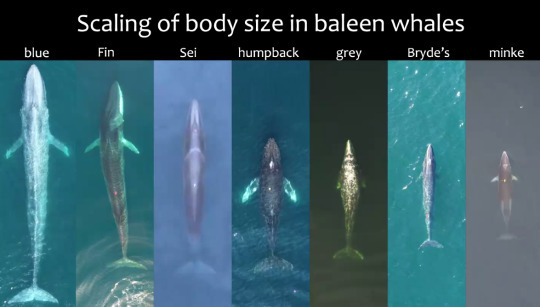
(i mention a professor but most of this information is actually stuff ive learned from doing web dives and reading academic papers)
one of my favorite attributes is the fact they retain their vestigial vibrissae (whiskers) through adulthood. their trademark tubercles (lumps around their mouth) are actually oversized hair follicles, and each one has a tiny, cm-long hair in the center. they also have quite a few hairs on their chin. (this may look like a "mustache", but rorquals and most cetaceans actually have an underbite, so its really a "beard")
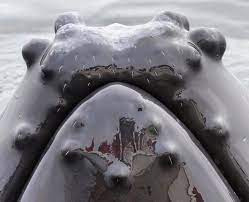
they also have stark black and white coloration similar to an orca. the northern hemisphere populations tend to have less white than the southern hemisphere populations. some southern hemisphere humpbacks even have eyespots akin to orcas. heres a southern hemisphere humpback - note how the while coloration creeps up above the armpit.
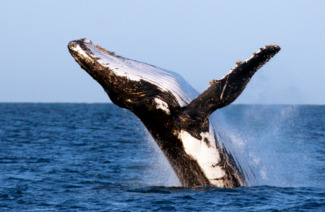
thats just physiology though. theres a wealth of behaviors unique to humpbacks like the cultural exchange of songs between populations or feeding behaviors like bubble net feeding, where a team of adults will assume specific roles (herding, blowing bubbles, calling) to trap schools of fish. its a little bit terrifying how they use extremely loud songs to stun and disorient the fish, and then a "leader", usually a female, dives down and sounds out a call to signal everyone to lunge up and feed. heres a really funny animation illustrating tag data on the spiraling swimming behaviors.
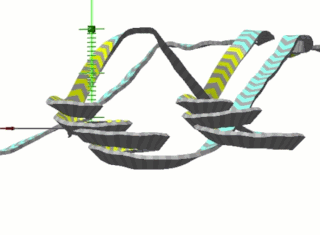
theres actually a female humpback whale that routinely comes back to a salmon hatchery in alaska every april to completely decimate the stocks. she literally sneaks into the hatchery's nets and consumes 13 million dollars worth of salmon before theyre released. its over

other things are escaping me right now. i just really enjoy these creatures
10 notes
·
View notes
Text
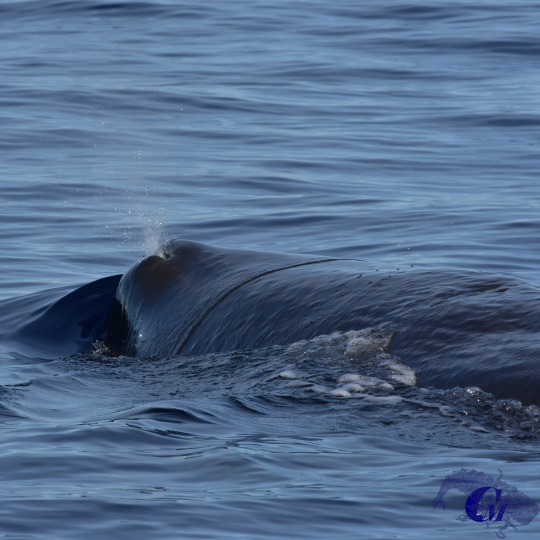
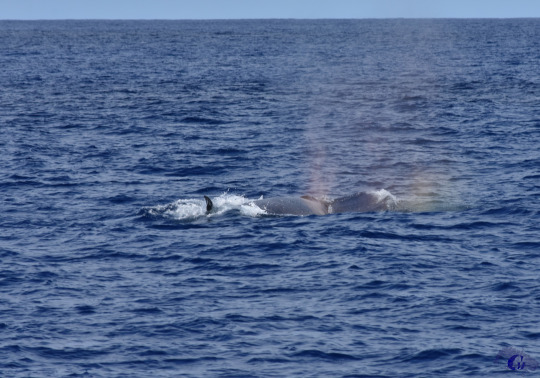

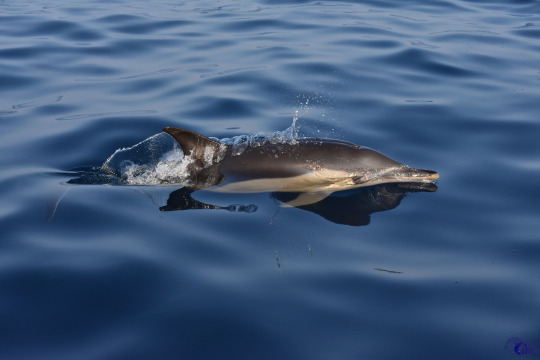
Happy #Whales and #Dolphins day! 🐬🐳🐋
Today we can celebrate the International Moratorium on whaling from the IWC! Today, 40 years ago, the IWC signed the ban on commercial whaling. It was supposed as a temporary stop to restore the cetaceans' population, but fortunately, it's still in charge. Although there are countries that continue to kill whales for commercial and "traditional" purposes, this practice is no longer rewarding and not accepted by the majority of the world population. We should press continuously to stop this nonsense huge killing of cetaceans! They are not only intelligent, highly social beings, but they have a fundamental role in the ocean's ecosystem! They provide many benefits, from biodiversity increase to climate regulation and tourism! Here you can find an amazing interactive infographic to understand better their importance: https://grid-arendal.maps.arcgis.com/apps/Cascade/index.html?appid=05f6dc47c20a41d8a0df68c0c99cc2f2
Unfortunately, cetaceans face multiple threats. Ship strikes and bycatch are an increasing problem! Thus, we have to act! Researchers all around the world are trying to find multiple solutions to submit to governments and institutions. But we have to make our part too. Here there are some petitions you may find useful to sign and share!
Follow the World Cetacean Alliance and the Whale and Dolphin Conservation on their social networks (Facebook, Instagram, Linkedin) to stay updated on their incredible work for the protection of cetaceans!
And... a bonus! Two sound recordings (first one from humpback whales and the second one from dolphins) from SanctSound portal (Example Sounds (ioos.us)) Enjoy!
#whales#dolphins#spermwhales#bottlenosedolphin#cetaceans#marinemammals#marineanimals#marinelife#ocean#sea#oceanphotography#oceanlover#cetaceanlover#balene#delfini#cetacei#mare#oceano#animalimarini#mammiferimarini#capodogli#tursiopi#oceancoservation#protecttheocean#savethesea#savethewhales
3 notes
·
View notes
Text
The Melodic Symphony of the Wild: Exploring the Enchantment of Wild Animals’ Song
In the heart of nature’s symphony lies a chorus unlike any other—the wild animals’ song. From the depths of dense forests to the vast expanse of deserts, these melodies resonate, enchanting all who care to listen. This musical tapestry is not merely an auditory delight but a window into the intricate ecosystems and behaviors of the natural world. Wild Animals Song
One of the most captivating aspects of the wild animals’ song is its diversity. Each species, from the majestic humpback whale to the tiny tree frog, contributes its unique tune to the ensemble. The haunting calls of wolves echo through the night, while the chirps and trills of birds create a dawn chorus that heralds the start of a new day. Even insects, with their buzzing and clicking, add their own rhythm to the mix.
But what purpose do these songs serve? For many animals, vocalizations play a crucial role in communication. From establishing territory to attracting mates, these melodies convey vital information within and between species. The eerie wails of a howler monkey serve as a warning to potential rivals, while the melodious songs of birds function as elaborate courtship displays. In this way, the wild animals’ song is not just a form of expression but a means of survival in the unforgiving wilderness.
Beyond communication, these songs also play a role in maintaining balance within ecosystems. The calls of predators can instill fear in their prey, keeping populations in check and preventing overgrazing or overhunting. Similarly, the calls of herbivores can alert others to the presence of danger, allowing for swift escape. In this intricate web of sound, every note is a thread that binds together the delicate fabric of life.
However, the wild animals’ song is not without its challenges. Human activities such as deforestation, pollution, and climate change threaten to silence these melodies forever. Habitat loss deprives animals of the space they need to communicate and reproduce, while pollution can disrupt the delicate acoustic environment on which many species rely. Climate change, with its unpredictable weather patterns and shifting habitats, further compounds these threats, forcing animals to adapt or perish.
Despite these challenges, there is hope. Conservation efforts around the world are working tirelessly to preserve the habitats and species that make up the wild animals’ song. From creating protected areas to implementing sustainable practices, these initiatives aim to ensure that future generations will continue to marvel at nature’s symphony. Moreover, advances in technology have allowed researchers to study animal vocalizations in unprecedented detail, shedding light on the complex dynamics of wild animal communication. Wild Animals Song
In the end, the wild animals’ song is more than just a collection of sounds—it is a testament to the beauty and resilience of the natural world. As long as there are forests to rustle, rivers to flow, and skies to soar, the melody of the wild will endure, a timeless reminder of our connection to the world around us. So let us listen, with open hearts and open minds, to the enchanting symphony that echoes through the wilderness, and strive to preserve it for generations to come.
youtube
0 notes
Text
Exploring the Rich Biodiversity: Your Ultimate Costa Rica Wildlife Trip
Costa Rica, a jewel of biodiversity nestled in Central America, offers an unparalleled experience for wildlife enthusiasts. From lush rainforests to pristine beaches, this small country boasts a staggering array of flora and fauna, making it a prime destination for eco-tourism. Embark on a Costa Rica wildlife trip and prepare to be mesmerized by the wonders of nature.
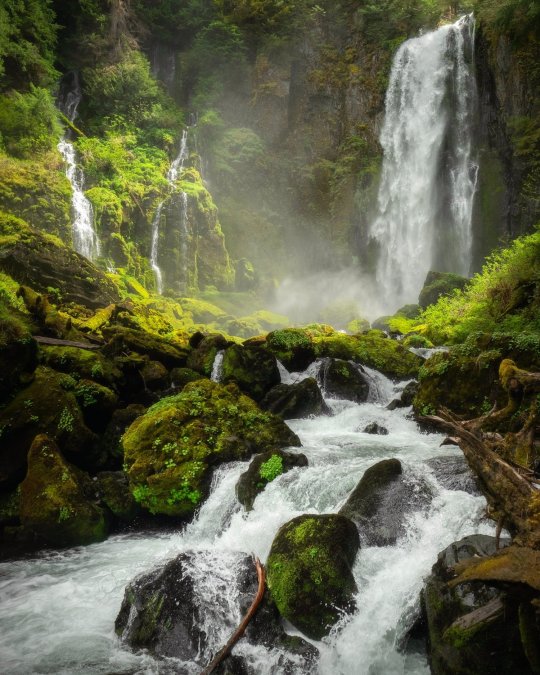
Discovering the Rainforest:
Your journey begins in the heart of Costa Rica's lush rainforests, where every step unveils a new marvel. Traverse through dense foliage, listening to the symphony of birdcalls echoing through the canopy. Keep your eyes peeled for the elusive jaguars, playful monkeys swinging from branch to branch, and colorful frogs camouflaged amidst vibrant flora. The Monteverde Cloud Forest Reserve and Tortuguero National Park are must-visit destinations for an immersive rainforest experience.
Encounters with Marine Life:
Transition from the verdant rainforests to the azure waters of Costa Rica's coastline. Dive into the Pacific or the Caribbean Sea, where a mesmerizing world of marine life awaits. Snorkel alongside graceful sea turtles, vibrant coral reefs teeming with life, and majestic manta rays gliding effortlessly through the water. Don't miss the chance to witness the annual spectacle of humpback whale migration along the Osa Peninsula, a truly unforgettable experience.
Birdwatching Extravaganza:
Costa Rica is a paradise for birdwatchers, with over 900 avian species soaring through its skies. Grab your binoculars and embark on a birdwatching adventure like no other. From the resplendent quetzal, with its iridescent plumage, to the iconic scarlet macaw, the country offers a kaleidoscope of birdlife. Head to the Corcovado National Park or the Carara National Park for prime birdwatching opportunities amidst pristine wilderness.
Close Encounters with Primates:
For a glimpse into the lives of our closest relatives, venture into Costa Rica's jungles in search of its diverse primate population. Watch in awe as troops of howler monkeys serenade the forest with their distinctive calls, or observe the playful antics of capuchin monkeys as they forage for food. The Manuel Antonio National Park and the Arenal Volcano National Park are hotspots for primate sightings, offering a chance to observe these intelligent creatures in their natural habitat.
Conservation and Sustainability:
While reveling in Costa Rica Family Adventure, it's crucial to remember the importance of conservation and sustainability. The country has made significant strides in protecting its biodiversity through initiatives such as national park systems, eco-friendly tourism practices, and reforestation efforts. By supporting responsible tourism operators and practicing Leave No Trace principles, visitors can contribute to the preservation of Costa Rica's precious ecosystems for future generations to enjoy.
0 notes
Text
From Humpbacks to Sperm Whales: Gold Coast Welcomes a Variety of Whales
Whales have long been the majestic rulers of the oceans, captivating the hearts and minds of people worldwide with their sheer size, grace, and mysterious allure. If you find yourself drawn to the breathtaking beauty of these marine giants, then the Whales Gold Coast is an experience you won't want to miss. Situated along the stunning coastline of Queensland, Australia, the Gold Coast offers a unique opportunity to witness a diverse array of whale species in their natural habitat.

A Whale of a Time on the Gold Coast
The Whales Gold Coast experience is a must for any nature enthusiast or adventure seeker. From the months of June to November, the waters off the coast of Queensland come alive with the annual migration of humpback whales. These majestic creatures undertake an epic journey spanning thousands of kilometers, making their way from the cold waters of Antarctica to the warmer tropical waters of the Gold Coast to breed and give birth.
Witness the Magnificent Humpbacks
As one of the most iconic whale species, humpbacks never fail to impress with their acrobatic displays and haunting songs. The Gold Coast offers numerous opportunities for whale watching, whether it's from the comfort of a luxury cruise, a thrilling jet boat ride, or even from the shores of the beach. Keep your eyes peeled for the sight of humpback whales breaching, tail slapping, and spy hopping as they frolic in the azure waters just off the coast.
Discover the Enigmatic Sperm Whales
While humpbacks often steal the spotlight, the Gold Coast is also home to another remarkable species: the sperm whale. These deep-diving behemoths are known for their distinctive square-shaped heads and impressive size, with some individuals reaching lengths of up to 20 meters. Although sightings of sperm whales are less common than humpbacks, lucky visitors may still catch a glimpse of these enigmatic creatures as they traverse the depths of the ocean in search of food.
The Importance of Conservation
As awe-inspiring as whale watching can be, it's essential to remember the importance of responsible tourism and conservation efforts. The waters of the Gold Coast serve as a vital habitat for whales and other marine life, and it's our collective responsibility to ensure their protection for future generations to enjoy. By choosing eco-friendly tour operators and adhering to guidelines for responsible whale watching, visitors can play a crucial role in safeguarding these magnificent creatures and their environment.
Plan Your Whales Gold Coast Adventure Today
Whether you're a seasoned whale enthusiast or embarking on your first whale watching excursion, the Gold Coast promises an unforgettable experience. With its stunning coastal scenery, diverse whale population, and commitment to conservation, it's no wonder that the Whales Gold Coast has become a bucket-list destination for nature lovers around the world. So pack your bags, grab your camera, and get ready for the adventure of a lifetime as you set sail to encounter the awe-inspiring beauty of these gentle giants in their natural habitat.
For more information please visit: https://coolyecoadventures.com.au/swim-with-humpback-whales/
0 notes
Text
10 Issues You Need To Know Before Going Whale Watching Oregon Coast
Minke whales, Blue whales, Sperm whales, Pacific white-sided dolphins, Bottlenose dolphins, Dall’s porpoise, and Harbor porpoise can all be found alongside the Oregon coast. Unfortunately, the enormous blue whales had been once heavily hunted, and their populations have been severely depleted. Today, they're a protected species, but they still face threats from local weather change, ocean air pollution, and ship strikes. People come from everywhere in the world to learn in regards to the Gray whales that journey along the Oregon coast annually. Whales are seen from Oregon's shores all yr lengthy though some months are higher than others check this site out.
Both charter boats and air services are available (and listed below). And, of course, calmer days are best, whether or not by land, sea, or air. The finest time of 12 months to see whales from this location is mid-December by way of mid-January as they're migrating South toward warmer waters. Alternatively, in late March by way of June, you presumably can see grey whales as they migrate north toward Alaska. In addition, it’s common to see as a lot as 15 whales a day right here throughout summer and fall as properly, as resident whales feed close to shore. The prime vacation spot for whale watching oregon coast is Depoe Bay, successfully whale watching oregon coast capital.

Daily whale watching oregon coast excursions range from 1-2 hours, with frequent sightings of gray and humpback whales, in addition to orcas. There are many various whale-watching tours available in Oregon, so it's essential to do your research before booking one. In truth, there's an estimated 200 resident gray whales that decision this area home all year round.
These are the approximately 200 whales that stay in Oregon's coastal waters in the course of the summer migration. The central coast specifically is a hot-spot for whales from June to mid-November. Boiler Bay State Scenic Viewpoint presents sweeping panoramic views simply off Highway 101. Ocean-going birds like albatrosses, oystercatchers and loons may be seen year-round too.
Don’t go in for a closer look, even should you see other people doing it. DePoe was initially allotted the land in 1894 and the city was purchased from the family within the Twenties. Eventually, actual estate investors purchased the land with plans to develop it right into a vacationer city. Depoe Bay is situated on the central Oregon Coast in Lincoln County, about 2.5 hours driving from Portland (102 miles). Take highway 18 west via Willamette Valley wine country to the highway 101 south junction at Otis.
The north cove path offers access for fishing and beachcombing. Here you can also see Shell Island rising just off shore the place protected seals and sea lions congregate in noisy colonies. Nestled between the rugged sea shore and plush temperate rainforest (green is everywhere), this state park offers guests one of the best of both worlds. Explore the overgrown trails of Siuslaw National Forest and think about signing up for a ranger-led tour of the paths to be taught extra about this numerous ecosystem. Cape Lookout is the perfect place to…well, “look out” for whales as they ramble along the coastline. From a vantage point on a sand spit slicing into the ocean, Cape Lookout State Park is a popular place to go to for recreation opportunities of all sorts.
During the week, volunteers are stationed at as a lot as 20 of the most effective spots to see whales on the Oregon coast. From late March to early June somewhere around 20,000 Pacific grey whales pass by way of Oregon’s coastal waters heading northward. There are so many wonderful places to spend some time scanning the horizon for the characteristic spouts of the whales as they cross the shore. We’ll take you through the most effective spots to go whale watching oregon coast. I’m a lifelong local who spent most of my childhood summers exploring the breathtaking coast. I’ve misplaced rely of the variety of instances my mom would take us to the Oregon coast for whale watching oregon coast.
Home to the historic Yaquina Head Lighthouse, the Yaquina Head Outstanding Natural Area presents distinctive opportunities to spot whales from its rugged cliffs and coastal trails. This protected space can additionally be residence to a wide range of seabirds, seals, and sea lions, offering a diverse wildlife experience. In the winter we watch 1000's of gray whales from mid-December through mid-January as they journey south to the good and cozy lagoons of Baja Mexico. Near Garibaldi, some of the greatest places to see whales embrace the North Jetty close to Barview, Bayocean Spit, Cape Meares State Scenic Viewpoint, and Cape Lookout State Park.
We also recommend visiting the small Whale, Sea Life, and Shark museum proper on the highway for more information about marine mammals, birds, and more. The helpful volunteers share data about the whales, offering schooling sources, help spot them, and reply any questions folks might have. We did one a few years ago, and our youngsters beloved the experience on the boat. They had far more persistence than they would have had standing on the shore.
These elusive whales are known for his or her quick, sleek actions and may occasionally be seen in Oregon's coastal waters. Although not as frequent as grey or blue whales, orcas are often seen along Oregon's shorelines. These very smart and social marine mammals are recognized for his or her striking black-and-white appearance and their highly effective searching abilities. However, gray whales are extra frequent than the opposite two varieties. Some of the whales you might see embrace gray whales, humpback whales, and orcas.
The middle has knowledgeable staff and volunteers to fill you in on fun details and supply binoculars to use during your go to. You might select a new whale-related activity every day and not run out for weeks! The whale watching oregon coast Center, talked about above, is a great place to start your journey and study concerning the whales and tips on how to spot them in the water.
The best time to see whales on the Oregon Coast is decided by the type of whale however migration associated sightings peak from December to January and from March to June. Gray whales (also spelled Grey Whales) are the most frequently seen species alongside the Oregon Coast, particularly during their annual migration. These majestic giants can grow up to 50 feet in size and weigh up to 40 tons. With their characteristic mottled grey appearance and heart-shaped blows, the gray whale is a sight to behold. There are four issues to be looking out for when whale watching oregon coast, based on Oregon Parks Department. Gray whales are essentially the most commonly sighted whales on the Oregon coast.
It is an extended boat with a heated cabin, seats for everybody, and complimentary coffee and tea. Visitors can typically see whales from the cliffs or boats, and there are several whale-watching tour operators in the space. It is positioned on the north finish of Newport and presents incredible views of the Pacific Ocean. In early summer season the Oregon Coast's resident grey whale watching oregon coast population starts to come back and may be seen all summer lengthy.
Look for the green “mobile-only price” tag beneath the lodge ranking within the app on your telephone. You can sometimes see the ship’s massive boiler nonetheless sitting the place it landed one hundred years ago and during extreme low tides, some have even ventured out to it. The web site, formerly known as Briggs Landing, was renamed Boiler Bay after the shipwreck. At Rocky Creek Falls/Ben Jones Bridge, there is a small pullout the place you'll find a way to look back on the bridge (designed by Conde B. McCullough) and benefit from the view. The highway then climbs up 500-foot Cape Foulweather, the first Oregon land formation seen by Captain James Cook in 1778. For more about Oregon native history on this space, see the Confederated Tribes of Siletz Indians.
On the northern coast of Oregon, there are multiple excessive factors that make good viewing places for migrating whales. Ecola State Park provides mountaineering trails with nice views over the ocean and of Terrible Tilly, the iconic lighthouse directly off the coast. If the whales aren’t spouting, nearby Indian Beach offers tide pools for a enjoyable afternoon with the household. We would be remiss if we failed to mention Depoe Bay as a prime whale watching oregon coast spot. Multiple companies provide whale watching oregon coast excursions from Depoe Bay when the climate and waves are optimum.
Boiler Bay additionally occurs to be an unbelievable place to spot sea birds like jaegers, oystercatchers, and loons, every with a funkier name than the last. Offering a large parking area and loads of flush toilets, this wayside is a convenient place to relaxation even when whale watching oregon coast coast is nothing more than an afterthought. Take an occasional break from whale watching oregon coast to admire the spruce-lined cliffs to the north as they gently sweep down into the ocean. Ready to see some whales but feeling cautious about heading out in your own?
Families with kids, then again, will benefit from the three-mile sand beach is well accessible as properly. The seaside acts as a great vantage point to scour the ocean floor for spouts. Learn about our resident grey whales and experience transiting the world’s smallest navigable harbor in considered one of their Zodiac RHIB boats. The boats are low to the water and solely take 2-6 passengers at a time for a extra intimate whale watching oregon coast expertise. One of the best things to see at this state park is the Umpqua River Lighthouse, which was inbuilt 1894 and is still in operation at present.
From north to south, these are the 26 whale watching oregon coast Spoken Here websites. With or and not using a volunteer to assist, these are the best places alongside the coast to spot whales. While the northern and central coast has more well-liked destinations for whale watching oregon coast, the southern coast also supplies ample alternative to catch a glimpse of these magnificent creatures. If you’re up for a hike, the best location to see whales at Cape Lookout is at the tip of the Cape Lookout Trail. It can be busy and gets muddy after it rains, so we advise bringing waterproof mountaineering footwear for the kids – and you.
Watch whales from 200 toes above the ocean on the historic Cape Meares Lighthouse, in-built 1889. Blue whales are the most important animals on Earth, reaching as a lot as one hundred ft in size and weighing as much as 200 tons. While they don't seem to be as common as gray whales, these light giants can generally be spotted off the Oregon Coast, particularly during the summer months. Head thirteen miles (20.9 km) south of Cannon Beach on Highway one hundred and one to seek out the turnoff for this coastal peak between mile markers 41 and 42 (just north of Manzanita). Besides being known as a great place to identify whales, Neahkahnie Mountain can additionally be known for its remarkable views and legends of long-buried Spanish treasures. Several tour corporations supply whale watching oregon coast journeys, and there are additionally several spots alongside the coast where you can view whales from land.
We have put our thoughts and ideas collectively, forming the premise that whale watching oregon coast must be a more private experience. Being honest and caring, making safety and luxury of our customers the priority. Clothing If you’re in any respect conversant in the Oregon coast–or Oregon in general–you probably realize it rains so much. Don’t get caught with soggy flippers whereas scoping the tides for whales. Bring alongside a rainjacket, comfortable sneakers (waterproof when you plan on going to the beach), and a heavy coat for those windy days.
The aquarium stated scientists imagine the grey whale they spotted is the same one sighted in Florida late last 12 months. The aquarium’s aerial survey team circled the whale’s area for about forty five minutes and took photos, and it later confirmed it was indeed a uncommon grey whale. A gray whale watching oregon coast extinct from the Atlantic for greater than 200 years was spotted off New England last week in an “incredibly rare occasion,” the New England Aquarium said. You could not see this all of the time; nevertheless, if you look intently, you will note some stunning waves and, if you're lucky, some spouting water which could be a whale. Gray whales are the most typical sort of whale seen within the space, and they can typically be spotted from the shore during their annual migration.
They must also let you know which facet of the boat you'll have the ability to spot the Whale. First, dress in layers and bring a jacket, as the temperature can vary significantly depending on the time of day and whether you're within the sun or shade. When getting ready for a whale-watching tour, you must maintain a few things in thoughts.
If you see a whale breaching the surface, you should use binoculars to get a closer look. If you are going whale watching oregon coast with a tour company, arrive early. Newport Tradewinds provides a selection of whale watching oregon coast packages, so there is certain to be an option excellent for you. Newport Tradewinds, Deep Sea Fishing, offers an exciting opportunity to go whale watching oregon coast. Whale watching is a well-liked exercise here, as whales can often migrate close to the shore. Without them, we might by no means be ready to see these superb creatures up shut and personal.
From Boiler Bay State Scenic Viewpoint whales could be seen all year spherical and also you get magnificent panoramic views. If you want to see humpback whales, go between September and January. These are the second commonest kind of whales to see off the Oregon Coast.
One of the coast’s most scenic state parks, Harris Beach State Park is a incredible basecamp for whale watching oregon coast. Home to Bird Island—Oregon’s largest island and a National Wildlife Sanctuary—as well as several imposing sea stacks, it presents abundant wildlife viewing alternatives. Gray whales are the celebrities of the show, but harbor seals, California sea lions and a plethora of sea birds never fail to entertain visitors both. Those two weeks constantly take place through the very peak of both grey whale migration seasons. If you want to go whale watching oregon coast, this is the time to do it.
For the informal household day journey to the coast (and even for seasoned explorers!) A sighting of a whale gliding via the rolling waves is sure to be a memorable expertise for all. Playful bottlenose dolphins generally frolicking in the waves in search of fish. These waters additionally tend to draw the occasional Humpback and Blue whale, although they are much extra rare and like to feed in deeper water. Depoe Bay is arguably the most effective location to identify whales in Oregon. While you proceed to have nice probabilities on the different locations on our record, Depoe Bay stands out as one of the popular places. A large perk is the whale watching oregon coast Center, where you can study extra concerning the whales and ask questions.
The climate in Depoe Bay, OR, is usually cool (50s-60s F) and damp with frequent rain throughout the year, aside from July and August. Temperatures rarely get too sizzling in summer with highs in the 60s-70s. The waves may be viewed from many points alongside the rocky shoreline around Depoe Bay, but please use caution, hold your distance and heed warning indicators and security barriers.
They are truly a sight to behold, and it's an honor to have the flexibility to expertise their natural magnificence. This knowledge motivated Don to create the whale watching oregon coast Spoken Here® program. Since 1978, it has grown to turn into some of the organized onshore whale watching oregon coast programs in the United States. Beverly Beach State Park day-use area AND campground might be closed to improve the ability and water traces until July 1, 2024.
During the busiest weeks, 1000's of gray whales migrate previous on their method to and from the waters of Alaska and Mexico. We additionally see humpback whales, orcas, dolphins, porpoise and even blue whales. You’ll principally be seeing Pacific gray whales, however other species have been spotted close to shore.
Low tide is the time for beachcombing, clamming, tide pools and cave exploration. Tidal Raves Seafood Grill offers outstanding views of the ocean, contemporary seafood, steaks, pasta and fish dishes. 🚐 There are several privately owned RV parks and campgrounds along the Oregon Coast off Highway one hundred and one. The finest method to spot a whale is to scan the horizon (no binoculars needed) to see when you can catch the distinctive spot of water whales spew from their blowholes. The Devil’s Churn is a cool rock close to shore that the waves flood into, making a “churning” impact you can see from a pullout alongside the freeway. The dramatic capes of Oregon’s shoreline present the right overlooks to perch on as you pick out whale spouts among the many waves.
On this route you’ll be capable of see Cape Meares, Cape Kiwanda, and Cape Lookout, each simply as awe-inspiring as the opposite. Stroll along the sand accumulating shells and different trinkets, fly kites, or chill out with a great book whereas the children construct sand castles close to the sparkling waves. This State Scenic Viewpoint north of Depoe Bay is the perfect spot to tug over along your drive down Highway one hundred and one. Gray whales could be seen right here often, flashing their fabulous flukes as they dive to scoop up food. She has been adventuring outdoors along with her household since her oldest child was born 13 years in the past, and has loved traveling each near and far since she caught the travel bug as a teen. She moved to the Pacific Northwest together with her family in 2012 where they first lived in Washington for five years before settling in Oregon in 2017.
The monument space is value strolling into and presents shelter from the rain if you don't want to sit in your car and watch the waves. Here yow will discover a simple park with a fantastic parking space the place you probably can sit proper in your automotive and watch the ocean for as long as you want to. There is something particular about dining while watching the ocean waves. In these restaurants, you possibly can look out the windows and find some fairly impressive waves, birds, and, if you are fortunate, whales. The space contains a selection of habitats, corresponding to tide pools, sandy seashores, rocky shores, and grassy meadows. Watch for whales from cozy oceanfront eating places and resorts or at many roadside turnouts.
From the Center, you have the potential to spot a selection of whales, together with orcas, humpback whales, grey whales, and infrequently even blue whales. Gray whales are the most common ones you’ll view throughout your time in Lincoln City. There are also lots of whale-watching excursions that you can easily book as properly that can take you out on the water to help spot whales. Whale watching in Depoe Bay, Oregon, provides impressive views that may deliver you again for more. With a massive sea wall working by way of city, you’ll feel like you’re on the water on a daily basis. These magnificent animals often migrate 5 to fifteen miles off the coast and are best seen on boat trips.
It’s a popular spot to look at the waves as they swish and swirl into the bowl, especially during king tides and winter storms. There are additionally tide pools along the north facet of Devil’s Punchbowl, in addition to Otter Crest Beach and Otter Rock Beach. Oftentimes this display is adopted by a glimpse of their tail (also called “flukes”) as the whales dive again down. Once you see a spout or a fluke, seize a pair of any ol’ binoculars if you have them and attempt to zero in on the area. It’s probably you’ll be ready to observe the whales spout and dive a couple of extra times as they swim around the shoreline. Whale watching additionally takes zero special knowledge or gear, which is an comprehensible barrier to entry for a lot of different nature experiences.
These binoculars are great as a outcome of they are lightweight, include a tripod, and work together with your cellular phone so you possibly can take footage with them. If you can’t make it to the Oregon coast this yr you'll have the ability to watch recorded reside streams from previous whale watching oregon coast Weeks on Oregon State Parks’ YouTube channel. A deep dive, also referred to as sounding or fluking, occurs when a whale watching oregon coast lifts its tail flukes out of the water.
Enjoy entry to dunes, waterfalls, mountaineering and different recreational activities. She helps over 20,000 vacationers and locals plan their out of doors adventures and household travel every month by sharing things to do and outdoor adventures within the Northwest and beyond. The greatest method to discover a whale is to look for spouts, which can be up to 12 ft long, on the horizon (3.7 m). Once you’ve discovered one, use binoculars to give attention to an active area.
They have glossy our bodies with distinctive ridges on their backs, which gives them their nickname. Fin whales are found in all the world's oceans and are known for their long migrations, as they travel from polar feeding grounds to temperate breeding grounds. They are baleen whales, feeding on small fish, krill, and squid by filtering water via comb-like plates in their mouths. After Gray whales, Humpback whales are the second most typical whale watching oregon coast.
However, there are a couple of gadgets that are typically really helpful that you bring. Oregon Coast Weekend is an internet journey resource dedicated to exploring the towns, seashores, parks, campgrounds, trails and hidden corners of the Oregon Coast. For your safety, be conscious of the tide schedule before boating or heading out to beaches and all the time keep an eye on the water level. Use extreme warning in rocky areas close to the water, the place sneaker waves can (and do) strike. There are two low tides and two excessive tides every single day on Oregon’s coast.
December to early February is the time to find Gray Whales migrating south along the Oregon coastline. Beverly Beach State Park is an attractive oceanfront park situated in Newport, Oregon. Situated on a scenic stretch of shoreline, the park provides gorgeous views of the Pacific Ocean. Visitors can take pleasure in varied actions at the park, together with swimming, fishing, tenting, picnicking, and climbing.
And this brings us to by far the most typical of the Oregon whales—the gray whales. Growing up to 50 toes in length, this species of baleen whale is essentially the most “coastal” whale watching oregon coast. When they migrate alongside the Oregon Coast, they’re often no further than a couple of miles from the mainland.
0 notes
Text
The Potential of AI in Wildlife Conservation Monitoring
Whether it’s fighting wildlife poaching, monitoring ecosystems or combating the illegal animal trade on social media, conservationists often face huge challenges when trying to protect endangered species. The key to overcoming these challenges is accurate, real-time data, which is where artificial intelligence (AI) comes in. By analyzing massive amounts of data, AI is illuminating the path to protecting animal species and assisting in the development of conservation policies.
From identifying individual animals for population studies to sorting through millions of camera trap images, AI is a powerful tool in the fight against wildlife poaching and other environmental threats. Until recently, these tasks would have been done manually by research teams. But with the help of artificial intelligence, this work is being done faster and more efficiently than ever before. For example, the AI-enabled software Megadetector halved the labeling time of camera trap photos in Gabon’s Lope and Waka national parks. This saved both time and money and allowed scientists to quickly identify any changes in the habitat and detect new species in these areas.

AI can also be used to track and monitor animals’ movements in their natural habitats, alerting researchers to any potential threats. This can be especially helpful in situations like the extinction of elephants in Africa, where poaching techogle.co is the biggest threat to their survival. With the help of GPS tracking devices, AI can predict an animal’s migratory patterns and determine how best to protect their habitat.
Other types of devices use AI to listen for acoustic signals to identify different whale species, including orcas, fin whales and humpback whales. By comparing incoming acoustic data to a library of recorded whale sounds, software is able to recognize the unique vocalization of each species. This technology allows the Gitga'at Nation, government agencies and industry to respond quickly if there is any sign of danger or disturbance in a whale’s habitat.
The ability to track and monitor animals’ movements in real-time helps to identify the fastest, most effective ways to protect their habitats and populations. By observing behavioral changes, conservationists can quickly spot any threats that are in the area, such as disease outbreaks, habitat degradation and poaching. For instance, if a species’ movements suddenly deviate from their normal pattern, this could be an indication that the animal is sick or is being hunted by poachers.
AI is transforming the way conservationists work, allowing them to collect more and better data on a larger scale. This is crucial for protecting species from technology website extinction and ensuring their survival in the wild. With the right software and hardware, these technologies can help to prevent poaching and other forms of animal exploitation and make a real difference in the lives of endangered species around the world. So, let’s join forces and give the animals a chance for a safer future. If you’d like to learn more about how AI is being used to fight wildlife poaching, download our eBook on the subject below.
1 note
·
View note
Text
The Potential of AI in Wildlife Conservation Monitoring
The Potential of AI in Wildlife Conservation Monitoring
The world’s endangered flora and fauna are facing an ever-growing threat from natural calamities such as forest fires, floods, and man-made ones such as illegal activities like poaching. To prevent such occurrences, animal species need to be spotted and monitored in their natural habitats. This task is done by a team of wildlife conservationists who collect and analyze data, including behavioral patterns, to form policies for the animal’s protection and preservation.

With the help of artificial intelligence (AI), conservationists can track animals from afar and take timely actions to save them from poaching. The technology can also be used to monitor the movement of animals, which is critical for predicting the population trends and understanding how climate change affects animal populations.
A new generation of wildlife conservationists are using AI to track animals and detect threats, from humpback whales to koalas. It has been shown that when techogle.co used properly, AI can do the job of hundreds of people at a fraction of the cost and time. But there are still challenges, from data collection to finding ways to deploy AI in a variety of settings and environments.
One of the most pressing issues is that the field of computational sustainability and AI for conservation is nascent, with limited standards and often disconnected data streams. This can make it difficult to coordinate conservation efforts across a diverse range of interests and perspectives.
Other challenges include the lack of funding for conservation research, and the inability to scale up data analysis to address urgent needs. The use of AI can overcome these challenges and lead to improved results.
AI can improve the accuracy and speed of monitoring and tracking animals by reducing the time it takes to analyze and interpret data. It can also enable better patterns of behavior, revealing insights that could not be gleaned from observation alone.
For example, AI can be used to recognize a single photo of an elephant, allowing researchers to determine the number of animals in a certain area and the trend of their numbers. Moreover, it can identify when an elephant is in distress or at risk of being killed by poachers, providing a powerful tool to fight wildlife crime.
In addition, AI can also technology website be deployed to detect humans who are committing a crime on the ground, helping to prevent wildlife poaching. For instance, AI-enabled drones that feature night vision cameras can detect humans who are carrying firearms or engaging in suspicious behaviors, enabling forest rangers to intervene in time.
As the field of conservation evolves, it is essential to ensure that AI is able to integrate seamlessly with existing systems and technologies. This will allow it to leverage the best of human and machine capabilities, ensuring the most effective and efficient conservation outcomes.
1 note
·
View note
Text
The significance of sustainability in the environment
We are a Sustainability Reporting Consultant In UAE, Environmental sustainability is one of the best chances we have to stop the current global climate catastrophes. To help you understand how it functions, let's examine why environmental sustainability is essential for a healthy future. Our Earth is not on a favorable trajectory, as seen by the rising global temperatures and growing garbage output. Some experts even predict that we are approaching the point of no return. Severe weather occurrences and climatic calamities will become more frequent without environmental sustainability. All it takes to witness this happen in real-time is to look back a few years. Over the past century, people worldwide have gotten increasingly cut off from nature, making it easy to forget how reliant on wildlife we are.

In our opinion as Sustainability Report Consultant In UAE, this all appears grim, but we hope to turn things around. Because of this, cities worldwide have already begun pursuing environmental sustainability. Visit our article on the world's nine greenest cities to learn more. Everything is interconnected; declining fish populations can jeopardize the survival of large marine mammals; just as decreasing numbers of more minor pollinators can jeopardize human food supplies. Regretfully, we are currently failing wildlife horribly. Humans are releasing toxic emissions into the atmosphere, destroying natural habitats for industrialization, destroying ecosystems to produce materials, poaching animals, leaving waste in the open, and adding to ocean pollution.
Being a Sustainability Report Consultant, Animal populations naturally increase when regulations are implemented to protect them. The numbers tell it like it is. For instance, humpback whale populations worldwide have recovered significantly since commercial whaling was outlawed in 1986; today, these populations are estimated to be 93% of their initial size. We must continue restoring wetlands, planting trees in areas that have lost them, maintaining coral reefs and establishing meadows with wildflowers. Professional expertise is required to ensure everything is done efficiently and with the animals' best interests in mind. We must save not just the species but also the environment in which they reside. However, legislation must be implemented for this to be successful.
As a Sustainability Reporting Consultant In UAE, our emission production must be dramatically reduced to limit the effects of global warming and climate change. As time passes, we witness increasingly extreme weather events that devastate animal habitats, cut down on animal supplies of food and water, and negatively affect the numbers of some animal populations. Are you tired of seeing plastic rubbish all over the place? The implementation of a circular economy is the primary remedy. In this manner, we can feed materials back into businesses, minimize our reliance on raw materials, lower emissions, and reduce the possibility of animals consuming plastic. An estimated 9 million people worldwide pass away every year as a result of land, water, air, or ocean pollution.
We as a Sustainability Report Consultant In UAE, this demonstrates unequivocally that environmental sustainability is necessary to eliminate a significant hazard to life and to enhance our health. There are many ways that environmental degradation is affecting our lives, from eating tainted food to breathing in filthy air. Reversing climate change requires embracing sustainability. Its advantages extend beyond the natural world, including many financial and commercial benefits for businesses and brands. For instance, wholly protected marine areas can result in a 400% increase in the overall biomass of marine species.
#Sustainabilityreportconsultant#Sustainabilityreportconsultantinuae#Sustainabilityreportingconsultantinuae
0 notes
Text
Ship Noises Mute the Songs of Humpback Whales
Drowned out by the din of passing ships, humpback whales attempting to breed off the coast of Japan are cutting their conversations short.
— By Katherine J. Wu

A Humpback Whale breaching near Stellwagen Bank National Marine Sanctuary in Massachusetts Bay. These whales may be imperiled by the sounds of passing ships, which silence their songs during mating season. Photo Credit: Whit Welles, Wikimedia Commons
With Its Enigmatic Chorus of Clicks, Groans, and Whistles, the haunting opus of the humpback whale (Megaptera novaeangliae) is one of the ocean’s most striking sounds. Every winter, humpbacks may swim thousands of miles to their seasonal breeding grounds, where males competing for mates fill the waters with soft serenades. But off the coasts of Japan, these seas are falling silent—and it seems humans are to blame.
Today, in the journal PLOS ONE, researchers report that the noises emanating from human-operated cargo ships disrupt the mating songs of humpback whales. Drowned out by the underwater din, some whales are even going completely mum in the vicinity of these vessels—which could have serious consequences for their reproductive success.
Beneath the surface of the sea, light falters fast. But because sound travels faster in water than air, keen audiophiles like the humpback whale use sound to navigate the dimly lit underwater world. These gentle giants engage in casual chatter year-round, but breeding season tends to feature prominent displays of song from males. Whale compositions are exquisitely complex, with at least 34 distinct sound types in the repertoire. Males will carefully remix their melodies as the years go by, and even pass tunes from population to population like vocal culture.
Despite all this, scientists still aren’t entirely sure why male humpbacks sing. Though musicality surges during periods of mating, song could serve a multitude of purposes, from gruff territorial warnings to come-hither calls. Whatever the whales’ rationale, it’s clear that song is crucial: Once they’ve warmed up, humpbacks can sing for hours on end, their ghostly echoes reverberating up to 100 miles through the surrounding sea.
youtube
But when humans enter the mix, being pitch perfect can be a double-edged sword. Unnatural noises from technological advancements like seismic airguns and military sonar have permanently disabled—and even killed—whales and their seafaring relatives.
Even the low-frequency hum of ships appears to perturb whales in conversation. The drones emitted by these ships can actually overlap with the frequencies of whale song, making it more difficult for humpbacks to pick out important bits of intel from the surrounding cacophony—the underwater equivalent of struggling to hear a friend in a busy restaurant.
Several researchers have observed whales changing their behavior in the presence of ships. However, compared to unmistakable consequences from airguns and sonar, it’s been challenging to reach a consensus on the extent of the effects of these more muted sources of noise, explains study author Tomonari Akamatsu, a biologist at the Japan Fisheries Research and Education Agency. In shipping hubs that see a lot of traffic, for instance, it’s difficult to disentangle which among the many possible disturbances are most problematic.
But the small outpost of Chichijima in Japan’s Ogasawara Islands presented a rare opportunity for Akamatsu and his colleagues. Separated from the southeastern coast of Japan by over 600 miles, the 2,000 or so residents of Chichijima receive just one daily ship: the Hahajima Maru, a small passenger-cargo vessel that ferries in a regular supply of goods and people from afar.
For the most part, the waters in this remote part of the world are quiet. But each winter, the seas swell with the symphony of hundreds of humpback whales eager to mingle with their mates—giving the researchers the chance to observe the effects of a single ship on the behavior of a wild population. The pristine nature of this locale stripped away other variables that could muddy the waters—other vessels, for instance, or inconsistent traffic.
“This study presents a really special and unique situation,” says Rosalind Rolland, a whale expert and veterinarian at the Anderson Cabot Center for Ocean Life at the New England Aquarium who did not participate in the research. “It’s very difficult to find anywhere in the ocean where there is just a single source of ocean noise. Most times there is noise from all directions.”
By placing two recorders in the waters near Chichijima, the researchers captured a series of whale vocalizations between the months of February and May 2017. Each day, they recorded one or two male humpbacks, amassing tracks of 53 soloists in total—half in the presence of the ship, and half without. The team also used the recordings to pinpoint the whales’ positions relative to the machinery as they sang, tracking their movements through time.
When the team mapped out the whales’ responses, the results were sobering. If the vessel was present, it produced, at its loudest, about 150 decibels of noise, comparable to the volume of a shotgun—and humpbacks seemed to shirk from its path, vacating the areas closest to the shipping lane. The whales that remained within 1200 meters of the ship produced fewer sounds overall. Some even cut their serenades off entirely—and most who did still hadn’t resumed their songs half an hour after the ship had passed through.
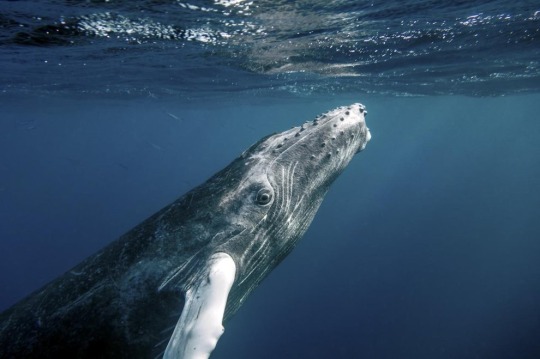
Humpback Whales rely on sound to communicate in the dark ocean waters. During their winter breeding season, males will sing for hours on end—but their serenades may be stifled by the sounds of passing ships. Photo Credit: Christopher Michel, Flickr
Akamatsu had initially assumed that in the presence of the ship, the humpbacks would raise their voices or change the frequency at which they sang—both strategies that might enable whales to discern calls above the clang and clamor. But, he says, perhaps this reticent response is an adaptive, energy-saving strategy.
“It’s actually very clever,” Akamatsu explains. “They know it’s temporary, so they just wait for it to pass.”
Vocal adjustments, after all, are exhausting. Even 500 to 1200 meters away from the ship, the whales were still contending with a noise level of about 100 decibels—roughly equivalent to a motorcycle or a raucous rock band. Perhaps, instead of attempting to outperform the uproar, humpbacks were simply waiting out the storm.
Every whale who stopped his song did eventually rebound from the chorus interruptus—and such resilience may spell tentatively good news for the residents of Chichijima, who remain tied to the Hahajima Maru’s regular visits. “This ship is a lifeline for an isolated island,” Akamatsu explains. “Humans need that ship to survive.”
But Michelle Fournet, a wildlife scientist in the Bioacoustics Research Program at Cornell University, points out that it’s also possible the humpbacks’ silence may not be indicative of flexibility at all. Muted by the regularity of passing ships, whales may be running out of sustainable strategies to cope, and instead accepting defeat. While bellowing above the fray may be exhausting, it at least offers whales a fighting chance of still being heard. Complete silence, on the other hand, brings the probability of communication down to zero. If humpbacks want any shot at coupling up, they can only wait so long for ambient noise to die down.
“Humpbacks have to contend with a lot of variability,” says Fournet, who was not involved in the research. “And they’re capable of adapting to natural sounds. But they may not always be able to apply those same strategies to [human-made] noise.”
While no long-term repercussions have yet been found, it will be imperative to measure the ship’s effects on humpback reproduction, Fournet adds. Even though most populations of humpbacks are no longer considered endangered, pods around the world remain vulnerable to human interference. And despite decades of study, researchers are still puzzling through the intricacies of whale song. It’s unclear how disastrous even the tiniest tweaks to a tune could be for humpbacks trying to find each other in the dark.
And, of course, the calm of Chichijima is the exception, not the rule: Most ships don’t sail solo. Acoustic pollution from human-made vessels will likely be on the upswing for years to come, warns Paul Wensveen, a biologist who studies marine acoustics at the University of Iceland. Even technological Band-Aids like insulators, which muffle the sound from ships’ propellers, are quickly overwhelmed by the sheer volume of noise radiating from the world’s busiest ports.
If humankind’s presence in the ocean continues to grow, there may soon be little stopping the whales’ brief intermission in song from turning into an irreversible coda.
“Some of the whales’ strategies have been successful so far,” says Fournet. “But as the ocean gets louder, and more vessels come in, we can only expect to see more changes.”
#Youtube#Nature#NOVA#Humpback 🐋 Whales 🐳#Katherine J. Wu#Stellwagen Bank | National Marine Sanctuary | Massachusetts Bay
0 notes
Text
Kayak Whale Seattle: A Once-in-a-Lifetime Experience
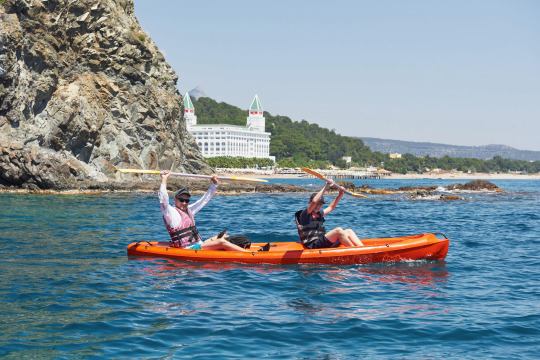
Introduction
Are you ready to embark on an unforgettable adventure in Seattle? Imagine gliding through the gentle waves, surrounded by majestic creatures of the deep. Kayak Whale Seattle is a truly unique experience that will leave you in awe of the natural beauty of the Pacific Northwest. In this article, we will delve into the world of kayaking, the incredible whale sightings in the area, and why Seattle is the ultimate destination for this thrilling activity.
Kayaking: A Close Encounter with Nature
What makes kayaking so special?
Kayaking offers a one-of-a-kind opportunity to connect with the environment in a way that few other activities can. As you paddle through serene waters, you become one with nature, effortlessly blending in with your surroundings. The tranquility of kayaking allows you to fully appreciate the stunning scenery and observe wildlife up close and personal.
Seattle: A Haven for Kayakers
Seattle, known for its stunning natural beauty, is a mecca for outdoor enthusiasts. With its expansive coastline, picturesque islands, and diverse marine life, it sets the perfect stage for a kayaking adventure. Whether you're a seasoned kayaker or a novice, Seattle offers a range of options to suit all skill levels. From serene lakes to challenging ocean excursions, there's something for everyone.
The Whales of Seattle: An Enchanting Encounter
Seattle's waters are teeming with awe-inspiring marine life. However, it's the majestic whales that steal the show. The region is known for its frequent whale sightings, making it a dream destination for nature lovers and wildlife enthusiasts.
The Transient and Resident Orcas
Seattle is home to two distinct populations of orcas: the transient and resident orcas. Transient orcas are known for their nomadic nature, traveling in smaller pods and primarily feeding on marine mammals. On the other hand, resident orcas, also known as the Southern Resident Killer Whales, are known for their complex social structure and primarily feed on fish.
Gray Whales: Mysterious Visitors
Each year, as the gray whales migrate along the West Coast of North America, some of these magnificent creatures make a pit stop in the waters around Seattle. These gentle giants captivate onlookers with their sheer size and grace, often coming close to kayakers, providing a truly enchanting experience.
Humpback Whales: Acrobats of the Sea
Known for their acrobatic behavior and distinct songs, humpback whales are a common sight in the waters off Seattle. Witnessing these majestic creatures breaching and slapping their tails is a sight that will forever be etched in your memory.
Kayaking with Whales: An Unforgettable Experience
What to Expect
Embarking on a kayaking adventure in Seattle provides a unique opportunity to get up close and personal with these magnificent creatures. You may witness graceful breaches, tail slaps, or even hear the haunting songs of humpback whales. However, it's important to remember that these are wild animals, and encounters may vary. Always respect their space and follow guidelines provided by experienced guides.
Safety First
Before venturing out on a kayaking trip, ensure you have the necessary safety gear and knowledge. It's essential to wear a life jacket, prepare for changing weather conditions, and familiarize yourself with basic paddling techniques. Joining a guided tour led by experienced professionals is highly recommended, as they can provide invaluable knowledge and enhance your overall experience.
Conservation and Preservation
As visitors in their natural habitat, it is our responsibility to respect and protect the marine environment and its inhabitants. Keep a safe distance from the whales and other wildlife, and avoid disturbing their natural behavior. By practicing responsible kayaking, we can ensure the preservation of this incredible ecosystem for generations to come.
Conclusion
Kayak Whale Seattle is an experience that will stay with you long after the adventure ends. The breathtaking beauty of the Pacific Northwest combined with the chance to witness these majestic creatures in their natural habitat creates an unparalleled experience. So, why wait? Dive into the world of kayaking and embark on a journey that will leave you in awe of the wonders of nature.
1 note
·
View note